Silver-studded Blue (Plebeius argus) | Species | ||||||||||||||||||||||||||||||||||||||||||||||||||||||||||||||||||||||||||||||||||||||||||||||||||||
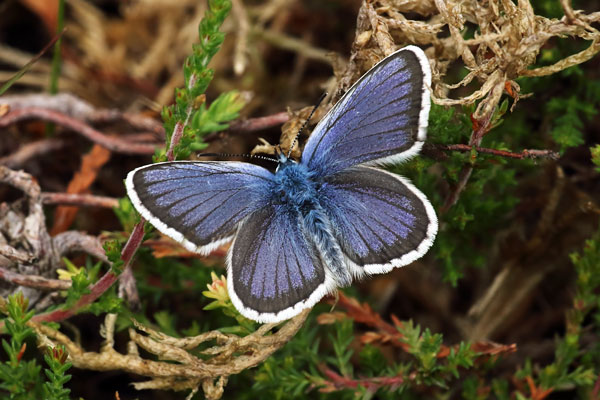 Male. Taken at Silchester Common, Hants, on June 30th 2019. (© David Hastings) (1/320th sec at f13) 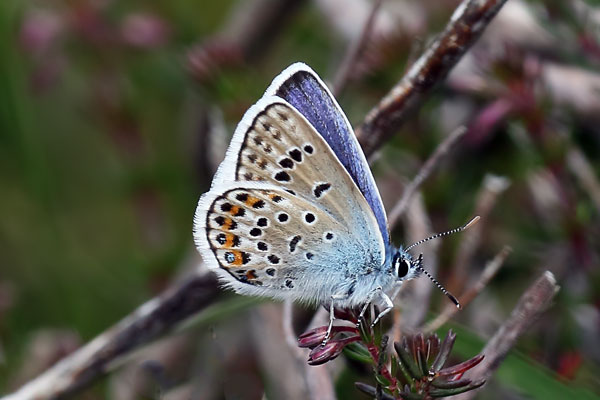 Male underside. Taken at Silchester Common, Hants, on JUne 26th 2021. (© David Hastings) (1/400th sec at f11) 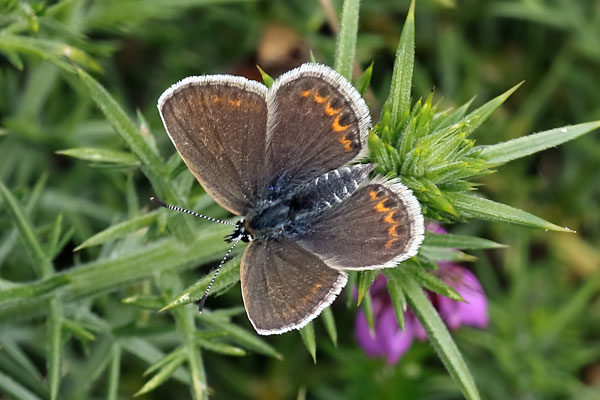 Female. Taken at Silchester Common, Hants, on June 30th 2019. (© David Hastings) (1/320th sec at f13) 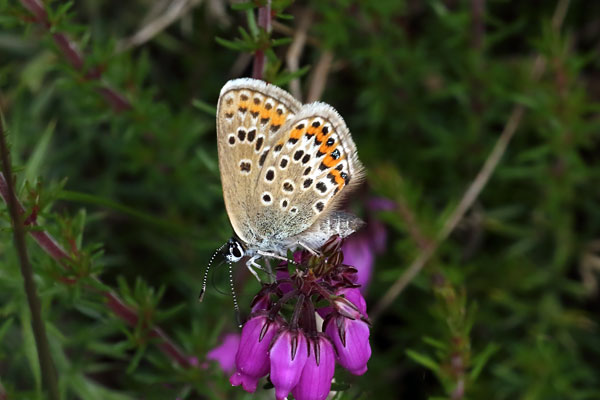 Female underside. Taken at Silchester Common, Hants, on June 30th 2019. (© David Hastings) (1/400th sec at f14) 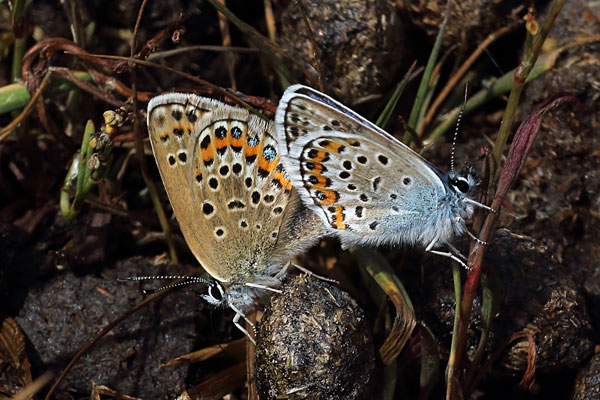 Mating pair. Taken at Silchester Common, Hants, on June 13th 2020. (© David Hastings) (1/500th sec at f13) DescriptionFamily: Polyommatinae Wing span: 26 - 32 mm There are two subspecies found in Britain. argus occurs throughout its range. caernensis is restricted to the Great Orme in North Wales. This subspecies can be distinguished by its smaller size, and the amount of blue in the female. The strongholds of this butterfly are the heathlands of southern England and East Anglia. There are colonies on the coasts of North Wales, Suffolk, Norfolk and Cornwall. This species is typically found on heathland that has not become too overgrown. It is also found on both limestone and chalk grassland and was formerly found in upland mosses. This species is a warmth-loving butterfly and is often found in sheltered areas, or those that are south-facing. It is found in close-knit colonies, with individuals rarely flying any distance. Most colonies contain fewer than a thousand adults. Adults typically fly in July and August, although many colonies, including those in the east of England and north Wales, emerge in the middle of June. There is one brood each year. The over-wintering stage is the ovum, with the larva fully formed inside. Newly-emerged adults, larvae and pupae are often attended by ants (especially the black ant Lasius niger), which offer them some protection from predators. The primary larval foodplants are Bell Heather (Erica cinerea), Bird's-foot Trefoil (Lotus corniculatus), Common Rock-rose (Helianthemum nummularium), Cross-leaved Heath (Erica tetralix), Gorse (Ulex europeaus), Heather (Calluna vulgaris) and Horseshoe Vetch (Hippocrepis comosa). Adults feed primarily on Heather. This butterfly has a rather slow, fluttering flight, often close to the ground. At night, adults gather in communal roosts, often on tussocks of grass. Vulnerable Earliest UK sighting: 13th June ; Latest UK sighting: 18th July Sightings
| |||||||||||||||||||||||||||||||||||||||||||||||||||||||||||||||||||||||||||||||||||||||||||||||||||||

